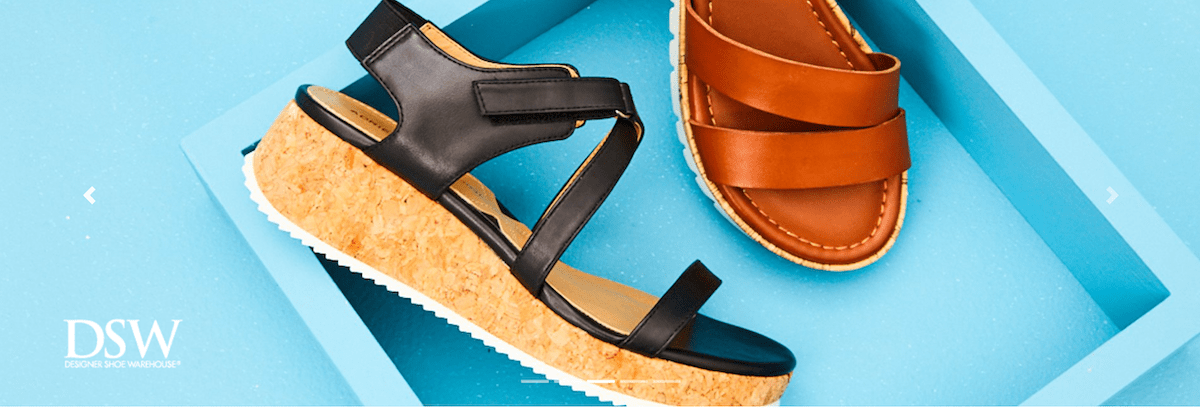As sales decline, DSW’s owner bets on owned brands and celebrity partnerships for future growth

Amid a sales slump, DSW’s parent company Designer Brands hopes investments in its new owned brands will help turn the business around and grow revenue in the long run.
In its second-quarter earnings report on Thursday, Designer Brands disclosed that net sales were $792.2 million, down 7.8% from a year earlier but ahead of analysts’ projected $785.7 million. The company’s gross profit also decreased to $273.4 million, from $295.7 million last year.
Despite a lackluster earnings report, executives tried to keep the focus on the lines of business that showed promising potential. Specifically, Designer Brands’ main bright spot this past quarter was the incremental growth of its owned brands. The company said it is on the way to achieving its goal to double sales from owned brands between 2021 and 2026, to have the category account for about a third of total sales. Today, the company says that figure sits at about a quarter. While growing more sales from owned brands could improve Designer Brands’ margin, it also adds a new level of complexity to the business.
On the conference call, CEO Doug Howe said, “Our portfolio of Owned Brands and National Brand partners remains strong and we are excited to be rolling out our new athletic and athleisure offerings from Le Tigre and Keds while continuing to elevate our relationship with Nike during a time that athletic and athleisure demand continues to grow.”
This points to the balance Designer Brands is trying to strike – appeasing shoppers looking for name brands like Nike, as well as those looking for more affordable styles from its growing in-house brands.
Designer Brands’ business has been challenged by the fact more brands like Nike and Adidas are focusing more on growing their own direct-to-consumer businesses. As these brands try to figure out what the right mix of DTC versus wholesale is for their businesses going forward, that creates more uncertainty for businesses like Designer Brands. In 2021, for example Nike announced it would stop selling products through a number of wholesale retailers including DSW. But in June, Nike reversed course and said it would once again start selling its products through DSW.
Selling more of its own products would then give Designer Brands more control over its own destiny. In turn, Designer Brands has been on a hunt to acquire more of its own brands. In July 2022, the group bought a one-third stake in Le Tigre. Designer Brands followed that up with the acquisition of Topo Athletic in December, and Keds in February 2023.
Ad position: web_incontent_pos1
“The unique synergies between our legacy retail business and our brand portfolio are putting us on a path to being more resilient than ever and we will continue to build out our leadership and structure our teams accordingly,” Howe said in the earnings release. “As we look ahead, we do anticipate near-term headwinds will persist, but we are confident in our plans to continue optimizing and spotlighting our unparalleled assortment.”
Going into the next quarter, Howe said that Designer Brands will focus on integrating its latest brand acquisitions into its retail and DTC channels. In July, the company brought on Laura Denk as president of DSW Designer Shoe Warehouse and EVP of Designer Brands, who will lead the integration of the new brands.
Brad Jashinsky, director analyst in the Gartner Marketing Practice, said that the challenge for Designer Brands is to find the right cadence between growing awareness of its owned brands while maintaining strong relationships with national brands.
Still, the road ahead will be bumpy for Designer Brands — as it has been for many apparel and footwear retailers. “I think both apparel and footwear will continue to fight through soft demand this year,” said Beth Goldstein, footwear and accessories industry analyst at Circana. “Macro headwinds remain,” Goldstein said. “Yes, the rate of inflation is slowing but consumers still see prices rising across the items they buy every day, and the student loan repayments loom.”
As for the future success of Designer Brands’ owned brands like Le Tigre, Goldstein said it’s still a little too early to tell how they can help the parent company’s bottom line. “However, I believe that they are approaching these brands in the right way, treating them like any other national brand that relies on marketing, buzz, and other resources to build awareness, engagement, and ultimately equity and loyalty,” she explained.
Ad position: web_incontent_pos2
Indeed, Designer Brands plans to continue striking major celebrity and influencer deals to help promote its in-house brands.
Howe said celebrity partnerships will continue to be at the forefront of Designer Brands’ marketing strategy. As an example, he mentioned actress Emma Roberts and DSW’s Crown Vintage shoe brand, with a new fall campaign focused on boots.
Moving forward, Jashinsky said that Designer Brands’ portfolio now has a number of different types of businesses “that require different expertise” to manage. “It’s a careful balance between being a multi-brand retailer and investing in your own brands,” he said.

